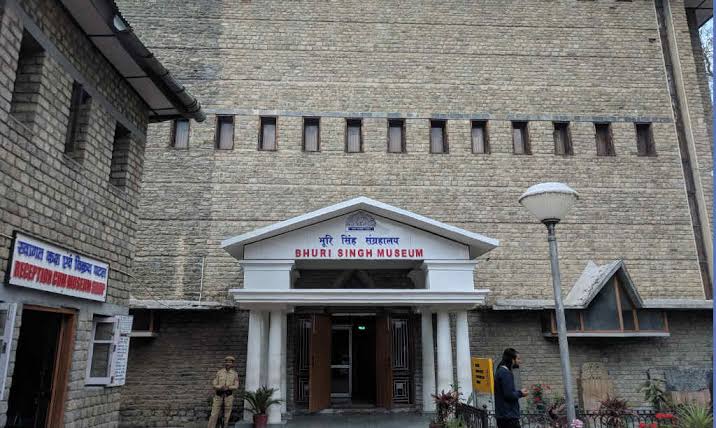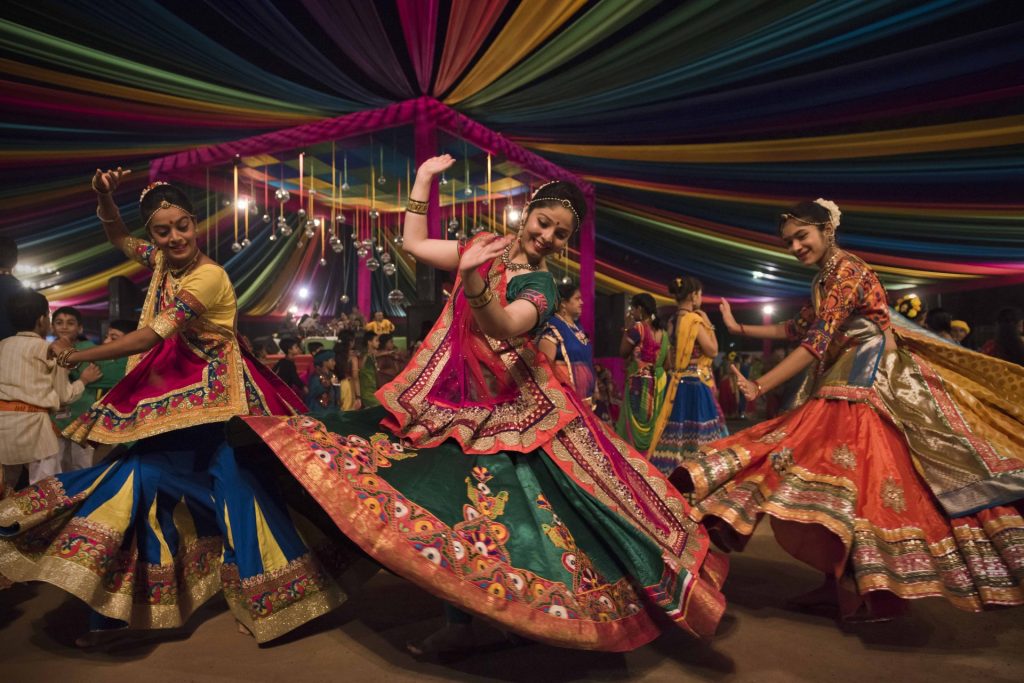Navratri is a vibrant, nine-day Hindu festival celebrated with great enthusiasm. It honors the divine feminine energy and includes music, dance, and rituals.
This festival is not just about religious practices; it is a cultural extravaganza that brings communities together. Navratri means “nine nights” in Sanskrit, and each night is dedicated to a different form of Goddess Durga. People fast, pray, and perform dances like Garba and Dandiya.
It’s a time of joy, color, and devotion. Homes are decorated, and temples are filled with devotees. Navratri signifies the victory of good over evil and the power of female divinity. Whether you’re a devout follower or someone who loves cultural events, Navratri offers something for everyone.
Introduction To Navratri 2025
Navratri is a vibrant and auspicious festival celebrated across India. Navratri 2025 promises to bring joy, devotion, and cultural richness. This festival spans nine nights and honors the divine feminine energy.
Significance Of Navratri
Navratri holds immense religious importance. It symbolizes the victory of good over evil. Devotees worship the nine forms of Goddess Durga. Each form represents a different virtue. People observe fasting and perform rituals with devotion. Celebrations include dance, music, and colorful attire.
Dates And Duration
Navratri 2025 starts on October 12 and ends on October 20. The festival lasts for nine days and nights. Each day is dedicated to a different avatar of Durga. The dates follow the lunar calendar. Devotees eagerly await this time of year. Navratri brings communities together in celebration.
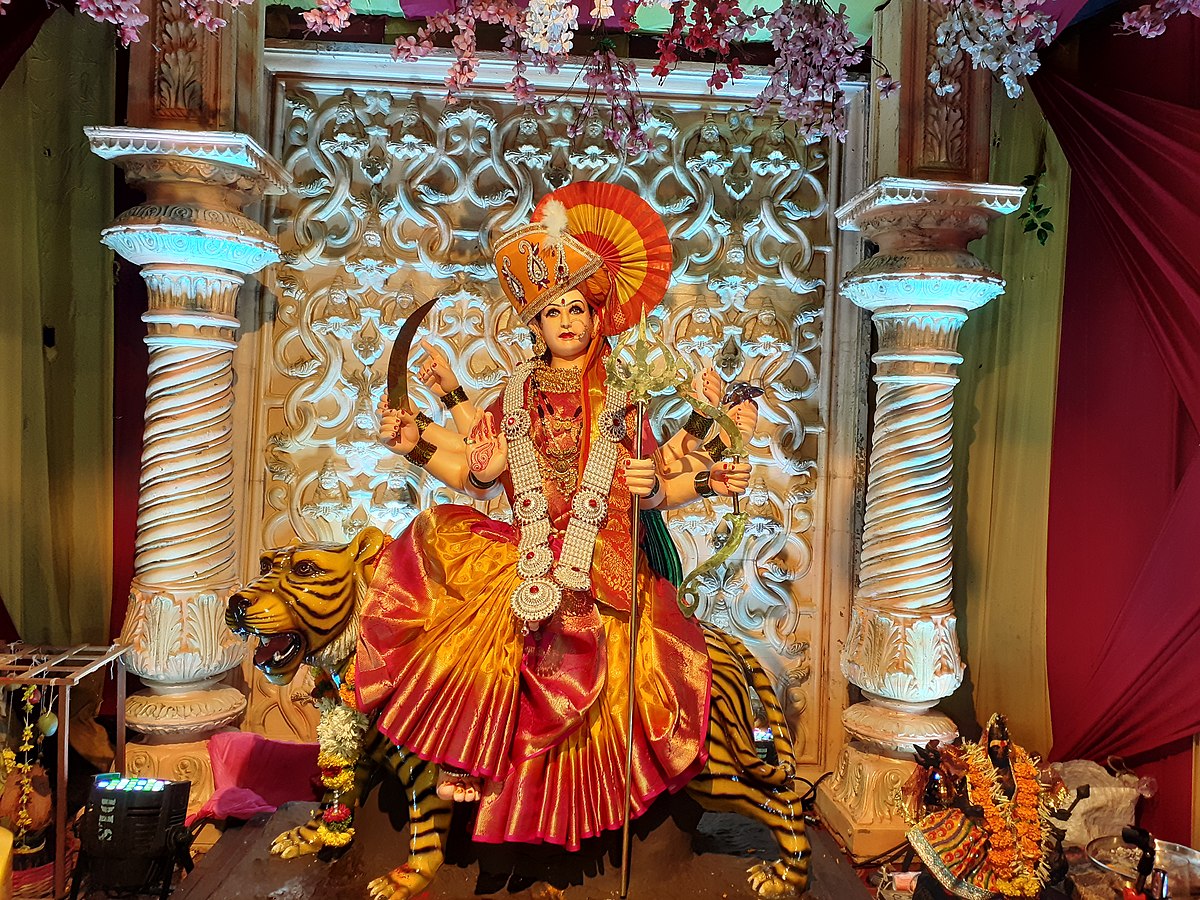
Credit: en.wikipedia.org
Historical Background
Navratri, a festival celebrated with great zeal, has deep historical roots. It honors the divine feminine power, Shakti. This vibrant festival spans nine nights. It marks the victory of good over evil. Let’s explore its rich historical background.
Origins Of Navratri
Navratri’s origins trace back to ancient India. It is celebrated in various forms across the country. The word ‘Navratri’ means ‘nine nights’ in Sanskrit. Each night honors a different aspect of the Goddess Durga. People believe these nights are sacred. They perform rituals and celebrate with dance and music.
Legends And Myths
Navratri is steeped in legends and myths. One popular story is about the demon Mahishasura. He terrorized the heavens and earth. The gods created Goddess Durga to defeat him. After a fierce battle lasting nine days, she emerged victorious. This triumph symbolizes the victory of good over evil.
Another legend involves Lord Rama. He worshipped Goddess Durga before his battle with Ravana. His prayers were answered. He defeated Ravana on the tenth day, known as Dussehra. This story highlights the power of devotion and righteousness.
Navratri Traditions
Navratri, a vibrant Hindu festival, celebrates the goddess Durga for nine nights with dance, music, and prayers. Traditional attire, colorful decorations, and delicious food mark this joyous occasion.
Navratri, the nine-night festival, is a time of celebration, devotion, and vibrancy. Each year, millions of people across India and the world immerse themselves in the rich traditions associated with this festival. From daily rituals to unique fasting practices, Navratri brings a deep sense of spirituality and community. Let’s delve into some of the most cherished Navratri traditions.Daily Rituals
Every day of Navratri is special. Each of the nine nights is dedicated to a different form of Goddess Durga. This means you get to experience a new facet of devotion daily. Start your day with a simple ritual. Light a diya (lamp) and offer fresh flowers at your home altar. Recite prayers or play devotional music. It sets a serene tone for the day. In many households, the chanting of Durga Saptashati, a sacred text, is a daily practice. It’s believed to invoke the Goddess’s blessings. If you’re new to this, try reading a few verses each day. You may find it deeply calming. Wondering how to make it more engaging for your family? Involve your kids in decorating the altar. Let them choose the flowers or draw small pictures of the Goddess. It’s a wonderful way to pass on the tradition.Fasting And Feasting
Navratri is synonymous with both fasting and feasting. While fasting, you purify your body and mind. It’s not just about abstaining from certain foods; it’s about mindful eating. During my first Navratri fast, I discovered how energizing it can be to focus on simple, nutritious foods. Fruits, milk, and specially prepared dishes like sabudana khichdi (tapioca pearls) became my staples. It was a refreshing change from my usual diet. Curious about the fasting rules? They vary, but many people avoid grains, onions, and garlic. Instead, they opt for ingredients like buckwheat flour, water chestnut flour, and potatoes. Feasting is just as important. After the fast, families come together to enjoy elaborate meals. It’s a time to relish traditional dishes, share stories, and bond. Have you ever tried making kuttu ki puri (buckwheat bread) or aloo ki sabzi (potato curry) during Navratri? They are delicious and easy to prepare. Involving your family in cooking these special meals can make the experience even more enjoyable. Navratri traditions are a beautiful blend of devotion, cultural richness, and familial bonds. They offer you the chance to reconnect with your roots and create lasting memories with your loved ones. So, how do you plan to celebrate Navratri this year?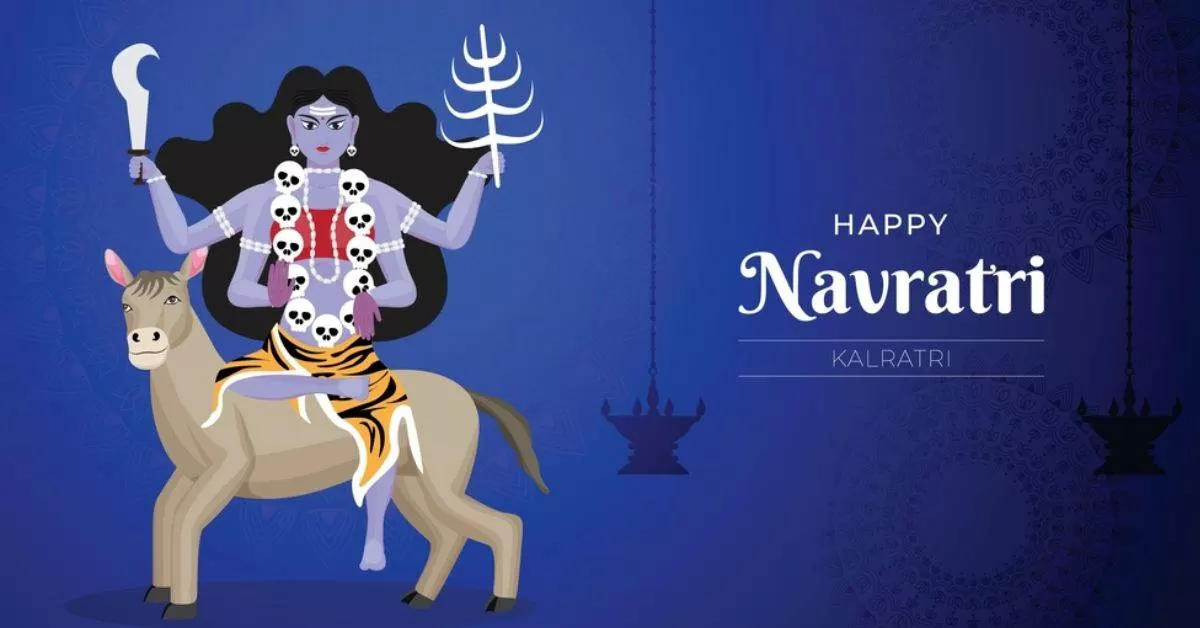
Credit: www.jagranjosh.com
Cultural Celebrations
Navratri is a vibrant festival celebrated across India. The festival honors the divine feminine and includes nine nights of joyous activities. Each region has its own unique ways to celebrate. This makes Navratri a diverse and culturally rich event.
Dance And Music
Dance and music are central to Navratri. People gather in large groups to perform traditional dances. Garba and Dandiya are popular in Gujarat. These dances involve rhythmic steps and are performed in circles. The beats of the dhol and other instruments add energy to the festivities. In Bengal, people perform Dhunuchi Naach during Durga Puja. This dance involves balancing a pot of burning incense. Each region has its own musical flair, making every celebration unique.
Regional Variations
Navratri celebrations vary by region. In North India, people observe fasts and recite prayers. They also visit temples and offer flowers and sweets. In South India, families arrange Golu, a display of dolls on steps. Each day, they invite friends and relatives to view the display. In the East, Durga Puja is a grand event. Huge idols of Goddess Durga are made and worshipped. The streets are filled with pandals and people. In the West, Gujarat is famous for its Garba nights. People dress in colorful clothes and dance till late night.
Navratri Decorations
Navratri, a vibrant festival, celebrates the victory of good over evil. Decorations play a key role in creating a festive atmosphere. They add color, beauty, and spirit to the celebrations. Whether at home or in public, decorations bring people together. Let’s explore how you can decorate for Navratri.
Home Decor
Transform your home into a festive haven with traditional decorations. Use colorful rangoli designs at your doorstep. They welcome guests with vibrant patterns. Enhance your living room with bright fabrics and cushions. Drape sarees or dupattas around furniture for a festive look.
Light up your home with diyas and fairy lights. They create a warm and inviting ambiance. Place fresh flowers in vases or create floral garlands. These add a fragrant touch to your decor. Set up a dedicated space for the Navratri Golu. Arrange dolls and idols in a creative manner. This display is both traditional and artistic.
Public Displays
Public spaces come alive with grand Navratri decorations. Streets and parks are adorned with lights and banners. Large-scale rangoli designs attract attention and admiration. Community halls host elaborate Navratri Golu displays. These exhibits showcase creativity and cultural heritage.
Temporary stages, called pandals, are set up for Garba and Dandiya nights. Decorate these with shimmering fabrics and lights. The vibrant colors create an energetic atmosphere. Public buildings and temples are illuminated. This adds to the festive spirit. Everyone contributes to the shared joy of Navratri.
Fashion Trends
Navratri is not just a festival; it’s a celebration of culture, tradition, and fashion. Each year, as the festival approaches, fashion enthusiasts eagerly anticipate the latest trends that will dominate the scene. Whether you prefer traditional attire or contemporary styles, there’s something for everyone to enjoy. Let’s delve into the fashion trends that are making waves this Navratri.
Traditional Attire
Traditional attire during Navratri carries a charm that’s hard to ignore. The vibrant colors, intricate designs, and rich fabrics make traditional outfits a favorite choice for many. Think about the classic lehenga choli, a staple during Navratri. It’s a three-piece garment comprising a long skirt (lehenga), a blouse (choli), and a dupatta. Each piece often features elaborate embroidery or mirror work, making the ensemble sparkle under the festive lights.
Another popular choice is the saree. Whether you opt for a Bandhani saree from Gujarat or a Kanjeevaram from South India, the elegance of a saree can never go unnoticed. Pair it with traditional jewelry like jhumkas and bangles, and you’re ready to make a statement.
This year, there’s a noticeable trend towards handloom fabrics. Khadi and silk are making a strong comeback. These materials not only look regal but also support the local artisans. Have you tried incorporating these fabrics into your wardrobe?
Contemporary Styles
If traditional attire isn’t your cup of tea, contemporary styles offer a modern twist to festive dressing. Fusion wear is gaining popularity, blending traditional elements with modern silhouettes. Imagine a crop top paired with a long, flowy skirt – it’s both chic and comfortable.
Jumpsuits with ethnic prints are another trendy option. They offer the ease of movement and a stylish edge, perfect for those energetic Garba nights. How about trying a dhoti pant paired with a stylish kurti? It’s a great way to stay comfortable while keeping up with the dance moves.
For the accessories, minimalism is the key. A statement necklace or a pair of bold earrings can elevate your entire look. Don’t forget to play around with your footwear. Kolhapuris or juttis with quirky designs can add a fun element to your outfit.
As you prepare for Navratri, consider experimenting with these fashion trends. What will you be wearing this festive season? Share your thoughts and let’s celebrate in style!
Festive Foods
Navratri brings a feast of delicious, traditional foods enjoyed during the nine-day festival. Savor dishes like sabudana khichdi, singhare ki puri, and kuttu ka dosa. These festive foods cater to those observing fasting rituals while celebrating.
Navratri is a time of joy and celebration. The festival spans nine nights, and food plays a crucial role. Families come together to cook and share traditional dishes. These dishes are not only delicious but also adhere to fasting rules. Here, we explore some festive foods that make Navratri special.Special Recipes
Navratri offers a range of unique recipes. Sabudana khichdi is a favorite. Made from tapioca pearls, it is light and tasty. Sabudana vada is another hit. Crispy on the outside and soft inside, it’s a delightful snack. Singhare ka halwa is a sweet treat. Made from water chestnut flour, it melts in your mouth. These recipes are not just food; they are experiences.Popular Dishes
Some dishes are essential during Navratri. Kuttu ki puri is one of them. Made from buckwheat flour, it pairs well with aloo sabzi. Rajgira paratha is also popular. This flatbread is nutritious and delicious. Makhana kheer is a must-have dessert. Made from lotus seeds, it is creamy and sweet. These dishes make Navratri meals memorable.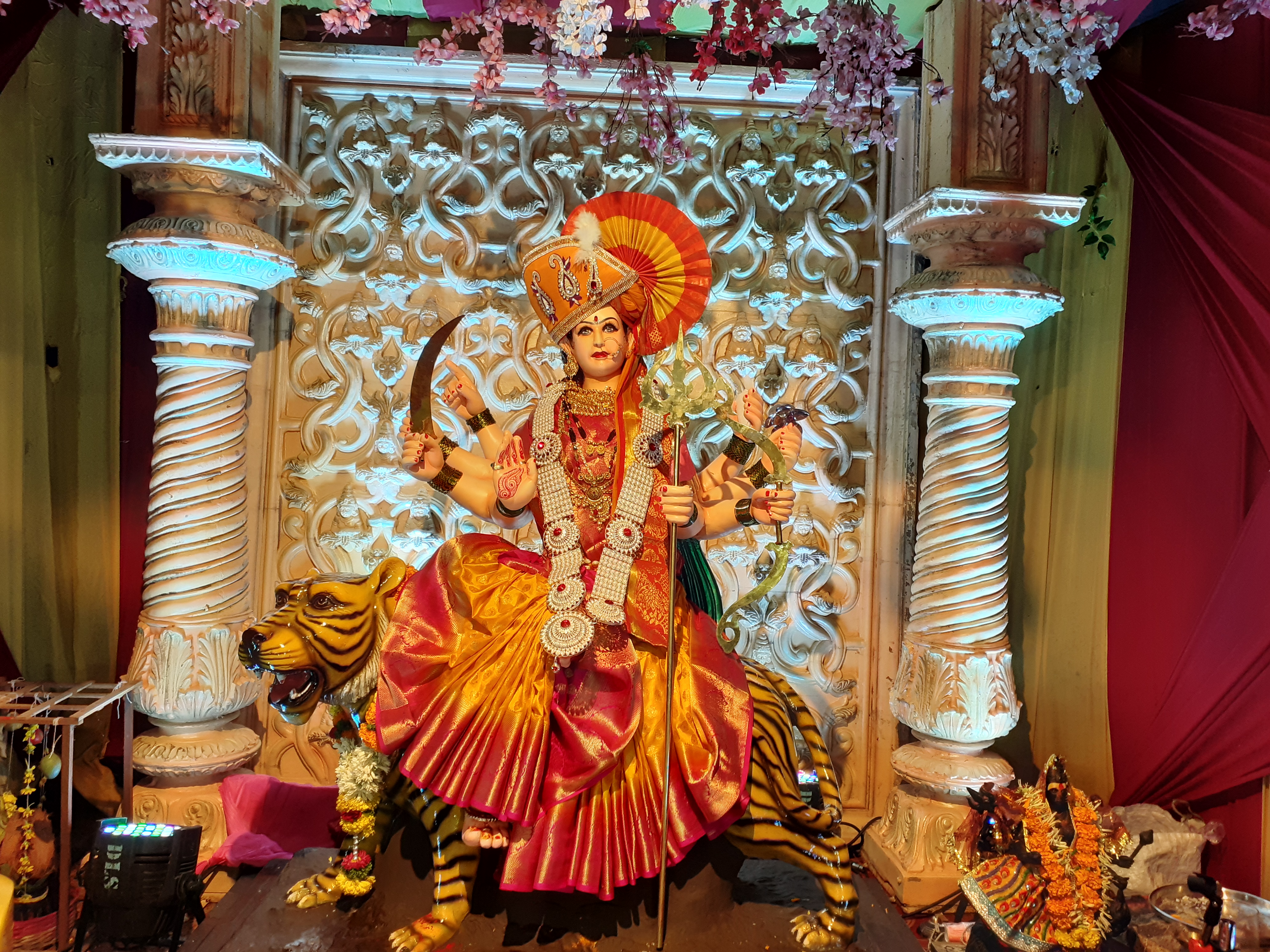
Credit: en.wikipedia.org
Community Involvement
Navratri brings communities together through vibrant celebrations. People dance, sing, and share festive meals. Everyone enjoys the cultural traditions and unity.
Navratri is a time of joy and celebration. Communities come together to celebrate with music, dance, and devotion. Community involvement during Navratri is a significant aspect of the festival. It fosters unity and togetherness. People gather to participate in various activities, making the festival more vibrant and meaningful.Local Events
Many neighborhoods organize local events during Navratri. These events include Garba and Dandiya nights. People dress in traditional attire and dance to folk music. Local events are a chance for everyone to join in the fun. They also showcase local talent through music and dance performances. Small businesses often set up stalls at these events. They sell traditional food, clothes, and jewelry. This supports local entrepreneurs and adds to the festive spirit.Charity And Giving
Charity plays a big role during Navratri. Many communities organize food drives and donation campaigns. They collect food, clothes, and money for those in need. This helps spread happiness beyond the festivities. Temples and community centers often lead these initiatives. Volunteers come together to pack and distribute essentials. This spirit of giving makes Navratri special. It reminds everyone of the importance of helping others. In essence, community involvement during Navratri is about unity, joy, and compassion. It strengthens bonds and spreads goodwill.Navratri Around The World
Navratri, a vibrant festival, is celebrated with great enthusiasm in India. But its spirit extends far beyond Indian borders. People around the globe honor this festival. They embrace the customs, music, dance, and colors of Navratri. Let’s explore how Navratri is celebrated worldwide.
Global Celebrations
In the United States, large Indian communities celebrate Navratri with zeal. Cities like New York, Chicago, and San Francisco host grand events. These events feature Garba and Dandiya dances, traditional music, and delicious food.
The United Kingdom also sees vibrant Navratri celebrations. London, Leicester, and Birmingham have large gatherings. People dress in colorful attire, dance, and enjoy traditional meals. The spirit of Navratri brings warmth and unity.
Canada, especially in cities like Toronto and Vancouver, hosts large-scale Navratri events. These celebrations attract both Indian and non-Indian participants. The dances, music, and cultural activities foster community bonding.
Influence On Other Cultures
Navratri has influenced other cultures globally. In Trinidad and Tobago, the festival blends with local traditions. People celebrate with dance, music, and rituals, creating a unique cultural mix.
In Fiji, Indian communities have introduced Navratri to the local population. The festival has become a part of Fiji’s cultural calendar. People from different backgrounds participate in the festivities.
Even in countries like Australia and New Zealand, Navratri has left its mark. The festival is celebrated with enthusiasm in cities like Sydney and Auckland. It brings together diverse communities to enjoy Indian culture.
Conclusion And Reflections
As we wrap up our deep dive into Navratri, it’s time to reflect on the essence of this vibrant festival. Navratri is more than just a series of rituals; it’s a celebration of life, spirituality, and community. Each year, people from various walks of life come together to honor the divine feminine and rejoice in the cultural heritage that binds us.
Personal Stories
Personal experiences during Navratri can be truly transformative. I remember attending my first Garba night, feeling overwhelmed by the energy and joy that filled the air. The rhythmic beats of the dhol, the colorful chaniya cholis twirling around, and the infectious laughter created an atmosphere that was nothing short of magical.
Sharing these moments with family and friends makes the festival even more special. My neighbor, Mrs. Sharma, always hosts a community dandiya night at her place. She says it brings her immense joy to see everyone, from young children to elders, dancing together. This sense of unity and belonging is what makes Navratri so unique.
Future Of Navratri Celebrations
Looking ahead, how will Navratri evolve? With the advent of technology, virtual celebrations are on the rise. Many families now connect through video calls for their evening aarti, ensuring that distance doesn’t dampen their spirits. This digital shift is making it easier for people across the globe to participate in the festivities.
However, there’s also a growing movement to return to traditional practices. More communities are focusing on eco-friendly celebrations, using sustainable materials for decorations and opting for organic colors for rangoli. This conscious approach not only preserves the environment but also enriches the spiritual experience.
What changes do you foresee in your own Navratri celebrations? Will you embrace the digital wave, or perhaps take a step back towards more traditional rituals? Reflecting on these questions can help you create a more meaningful and fulfilling celebration.
In the end, Navratri is a time to celebrate, reflect, and rejuvenate. Whether through personal stories or evolving traditions, each Navratri brings new insights and deeper connections. As you prepare for the next Navratri, think about what this festival means to you and how you can make it even more special.
Frequently Asked Questions
What Is Navratri And Why Is It Celebrated?
Navratri is a Hindu festival celebrating the goddess Durga. It lasts nine days, honoring her nine divine forms.
What Are The 9 Days Of Navratri?
The 9 days of Navratri celebrate different forms of Goddess Durga. They are Shailaputri, Brahmacharini, Chandraghanta, Kushmanda, Skandamata, Katyayani, Kalaratri, Mahagauri, and Siddhidatri.
What Do People Do During Navratri?
During Navratri, people fast, perform traditional dances like Garba and Dandiya, and worship the goddess Durga. They also visit temples, wear colorful clothes, and participate in cultural events.
What Are The 9 Colors Of Navratri Day?
The 9 colors of Navratri are: Yellow, Green, Grey, Orange, White, Red, Royal Blue, Pink, and Purple. Each day has a specific color.
Conclusion
Navratri celebrates culture, devotion, and tradition. It’s a festival of joy and color. Families come together, sharing food and dance. Temples are beautifully decorated. The air fills with chants and prayers. Each day honors a different form of Goddess Durga.
This brings spiritual energy and blessings. People wear vibrant clothes, adding to the festivity. Navratri also marks the victory of good over evil. It’s a time for renewal and reflection. Celebrate Navratri with love and positivity. Enjoy every moment and create lasting memories.
{ “@context”: “https://schema.org”, “@type”: “FAQPage”, “mainEntity”: [ { “@type”: “Question”, “name”: “What is Navratri and why is it celebrated?”, “acceptedAnswer”: { “@type”: “Answer”, “text”: “Navratri is a Hindu festival celebrating the goddess Durga. It lasts nine days, honoring her nine divine forms.” } } , { “@type”: “Question”, “name”: “What are the 9 days of Navratri?”, “acceptedAnswer”: { “@type”: “Answer”, “text”: “The 9 days of Navratri celebrate different forms of Goddess Durga. They are Shailaputri, Brahmacharini, Chandraghanta, Kushmanda, Skandamata, Katyayani, Kalaratri, Mahagauri, and Siddhidatri.” } } , { “@type”: “Question”, “name”: “What do people do during Navratri?”, “acceptedAnswer”: { “@type”: “Answer”, “text”: “During Navratri, people fast, perform traditional dances like Garba and Dandiya, and worship the goddess Durga. They also visit temples, wear colorful clothes, and participate in cultural events.” } } , { “@type”: “Question”, “name”: “What are the 9 colors of Navratri Day?”, “acceptedAnswer”: { “@type”: “Answer”, “text”: “The 9 colors of Navratri are: Yellow, Green, Grey, Orange, White, Red, Royal Blue, Pink, and Purple. Each day has a specific color.” } } ] }
